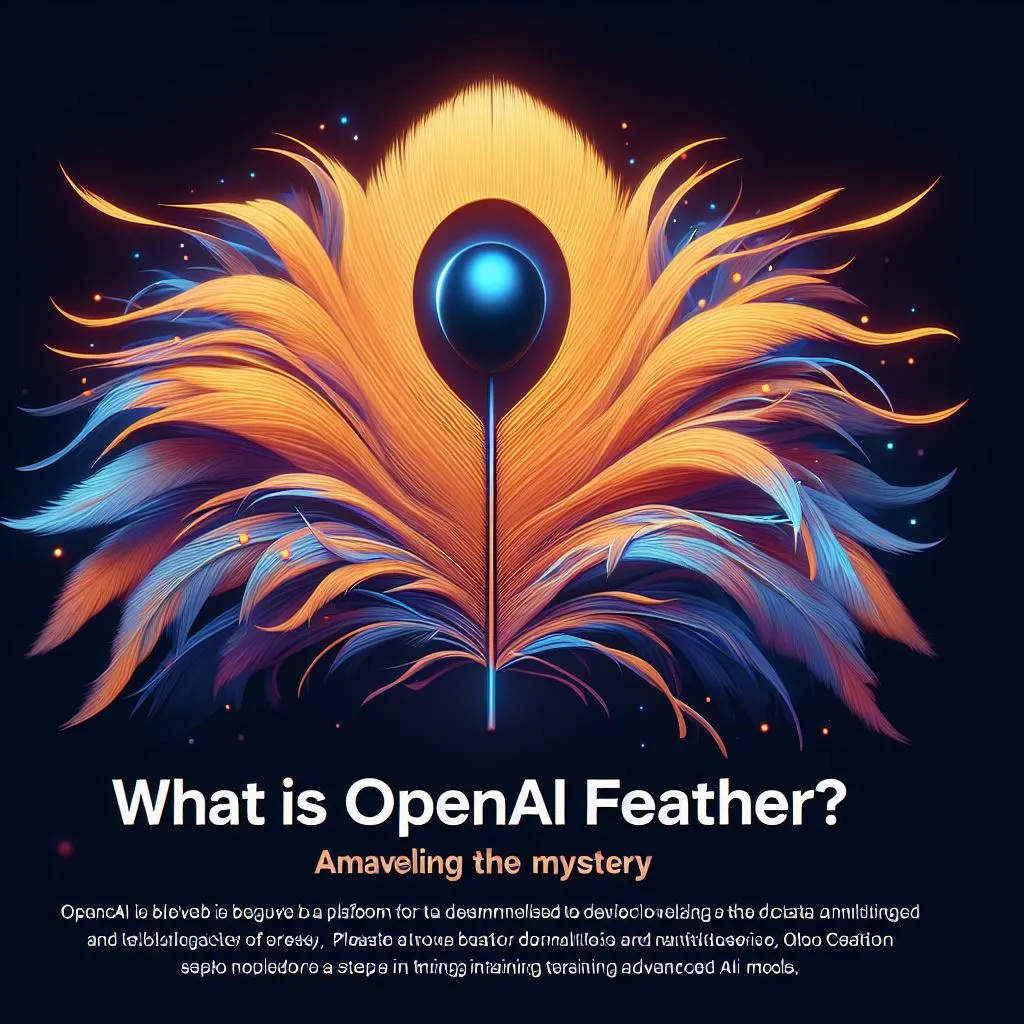In the ever-evolving landscape of artificial intelligence, a new initiative from OpenAI, potentially integrating forms of electronic data processing, has been sparking widespread intrigue and speculation. Dubbed “Feather,” this mysterious project has captured the attention of the tech community, prompting questions about its potential impact on the future of data science and machine learning.
What is OpenAI Feather?

OpenAI Feather is believed to be a platform developed by OpenAI, the renowned AI research company, focusing on data labeling and annotation service. Based on trademark filings and limited public disclosures, Feather is speculated to be a tool focused on revolutionizing the data annotation and labeling process, a critical step in training advanced AI models.
The scant details available suggest that Feather leverages advanced machine learning techniques to automate and enhance the accuracy of data labeling. This could significantly streamline the process of preparing datasets for complex AI applications, including the processing and systemization services using automated labeling, reducing the time and resources required.
Why is Feather Gaining Attention?
The excitement surrounding OpenAI Feather can be attributed to several factors:
- Innovative Potential: OpenAI’s track record of pushing the boundaries of AI technology fuels the speculation that Feather could introduce groundbreaking capabilities in data processing.
- Critical Need: The AI community recognizes the immense value of efficient data labeling and annotation in developing more accurate and sophisticated AI models. Feather’s potential to address the need for efficient data labeling and annotation has captured widespread attention.
- OpenAI’s Reputation: Previous impactful initiatives by OpenAI, including work on chatgpt, have set high expectations, leading to heightened anticipation for any new project the company undertakes.
Potential Impact on Data Science and Machine Learning
OpenAI Feather’s potential impact on data science and machine learning is multifaceted:
Enhanced Efficiency
By automating the data labeling process through data labeling and annotation service, Feather could drastically reduce the time and resources required to prepare datasets for model training. This increased efficiency in data labeling and annotation could accelerate the development of AI models, allowing researchers and organizations to iterate more quickly.
Improved Accuracy
The advanced algorithms and techniques employed by Feather are expected to lead to more precise data annotations, directly improving the performance and reliability of the AI models trained on these datasets.
Accessibility
By making high-quality data labeling and annotation more accessible, Feather could democratize AI development, enabling smaller teams and organizations to compete with industry giants. This could foster greater innovation and diversity in the AI ecosystem through improved accessibility to data labeling and annotation services.
Speculating About Feather’s Features
While the details about OpenAI Feather remain largely under wraps, we can speculate about some of the potential features the platform might offer, possibly including systemization services using automated labeling.
- Enterprise Solutions: Tailored tools and integrations that cater to the complex needs of large-scale organizations, including data processing and systemization services, streamlining their AI development workflows.
- Lightweight Models: Efficient, scalable AI models that maintain high performance with reduced computational demands, making them, through the use of systemization services using automated labeling, more accessible and practical for a wider range of applications.
- Automated Data Processing: Cutting-edge automation for data curation, ensuring datasets are clean, relevant, and ready for model training, further enhancing the efficiency of the AI development lifecycle.
Why the Secrecy?
OpenAI’s discretion regarding Feather could be a strategic move to ensure the platform, which offers labeling and annotating of images among other services, is fully developed and secure before its public release. This approach allows the company to refine Feather’s features based on internal testing and feedback without the pressures of public scrutiny or competitor influence.
Conclusion
The anticipation surrounding OpenAI Feather highlights the AI community’s eagerness for tools that can streamline and enhance the development of advanced AI models. As we await official details from OpenAI, the potential of Feather to revolutionize data science and machine learning, leveraging data labeling and annotation, remains a topic of much speculation and excitement.


